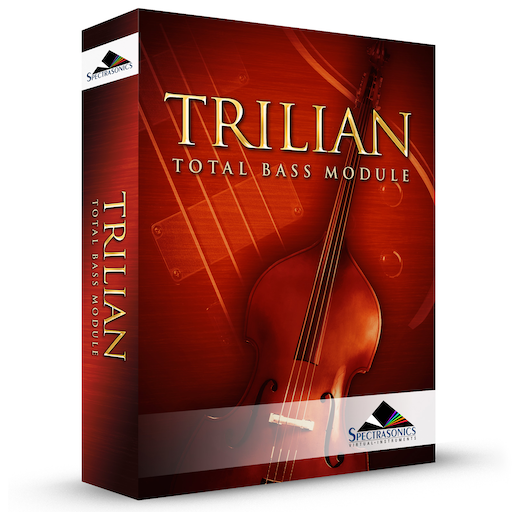
Latch & Trigger Modes
The Latch Mode and Trigger Mode features extend the performance capabilities of Trilian, especially when used together with Live Mode or Stack Mode.
Used together, they enable a wide range of creative performance, live remixing, and composition techniques to discover and explore.
NOTE: Be sure to check out the “Latch and Trigger Modes” tutorial and the in-depth sections of the Reference Guide for using Latch & Trigger modes together with Live Mode and Stack Mode.
Latch Mode
When Latch Mode is enabled for a Part, repeatedly playing a note will toggle the note ON and OFF. When it is toggled ON, the note will continue to sustain, even if the note is released. Playing the same note again will toggle it OFF. This allows quick triggering of rhythmic phrases or sustained sounds, while freeing the hands to play additional notes for layering, or for switching to other Parts to play new phrases on top.
The Latch Mode button allows you to toggle Latch Mode ON and OFF for the selected Part.
Selecting the Latch Mode button will enable Latch Mode. The button will highlight to indicate that Latch Mode is enabled for the Part.
If you are already holding sustained notes when you enable Latch Mode, those held notes will be latched.
Selecting the Latch Mode button again will disable Latch Mode for the part.
NOTE: Disabling Latch Mode for a Part while it’s playing will immediately send an “All Notes Off” message to the Part. The tails from FX and release stages from envelopes will continue to decay. The “All Notes Off “command will apply to all notes that are playing on that Part.
NOTE: A Part’s Latch Mode status can also be viewed or changed from the LIVE MODE or STACK MODE pages
Trigger Mode
Trigger Mode enables real-time quantization of incoming MIDI notes, so that Parts will always play in sync. This makes it very easy to experiment and improvise along with other clocked sources without losing synchronization. These features are a lot of fun to use for jamming and building up ideas quickly!
The Trigger Mode icon displays the current Trigger Mode for the selected Part, and allows you to access the Trigger Mode menu for that Part.
To change Trigger Modes, select the Trigger Mode icon and choose the desired Trigger Mode from drop-down menu. A checkmark will appear next to the selected option, and the Trigger Mode icon will change to reflect the selected Trigger Mode.
Trigger Modes
- Immediate
This is the default Trigger Mode. MIDI input is not quantized, and playback of MIDI notes is immediate.
- Next 16th
This option delays the playback of incoming MIDI notes to the next 16th note. In other words, notes are quantized in real time to the next 16th note. If you play ahead of the next 16th, there may be a slight delay before the note sounds. This delay will be a maximum of a 16th note at the current tempo. This mode makes it easy to play quick phrases in perfect sync with other Parts or clocked sources.
- Next Beat
This option delays playback to the next beat. If incoming MIDI notes arrive ahead of the next beat, the delay is a maximum of one beat. Next Beat mode makes it very easy to trigger rhythmic patches in perfect sync, and when used together with Latch Mode, for layering phrases that are quantized to the beat in real time.
- Next Bar
Delays playback until the next bar. If MIDI messages arrive ahead of the next bar, the delay is a maximum of one bar. This mode is especially useful if you want to synchronize phrases on the downbeat of a measure. You can press a note anytime in the previous bar and it will wait until the next bar to play.
NOTE: The selected Trigger Mode also affects a Part’s Arpeggiator, LFOs and Envelopes. These will also be delayed until the note itself is triggered.
NOTE: A Part’s Trigger Mode can also be viewed or changed from the LIVE MODE or STACK MODE pages.
Need more help with this?
Spectrasonics Customer Support



